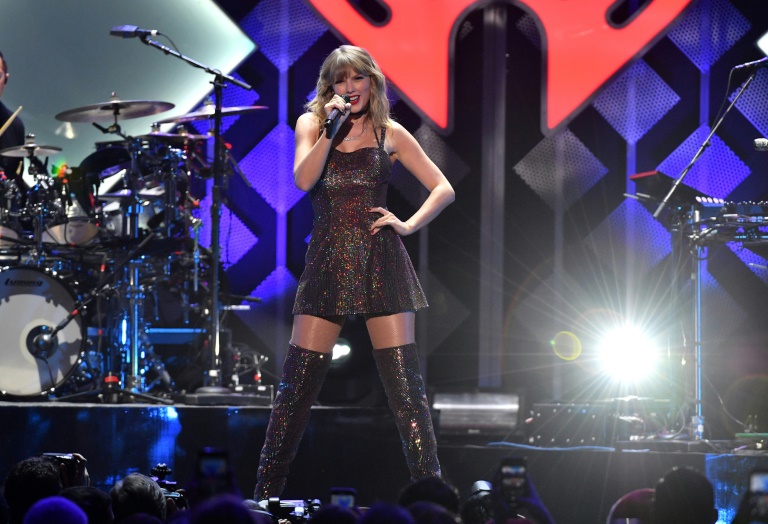From a 14-minute flight by Drake’s private plane to Taylor Swift’s carbon footprint, celebrities are struggling to shake off a firestorm over their jet emissions amid the climate crisis.
Fury erupted in July when reality star Kylie Jenner shared a picture to her 364 million Instagram users of her and her partner, rapper Travis Scott, in front of two jets with the caption: “you wanna take mine or yours?”
Critics on social media swiftly attacked Jenner, calling her a “climate criminal”.
Then last week, British sustainability marketing firm Yard named and shamed the “worst private jet CO2 emission offenders” among celebrities.
Normally used to topping music charts, US pop star Taylor Swift headlined the unenviable list, prompting a torrent of social media outrage, memes and jokes that she was using her jet to pick up food.
Her jet has flown 170 times since January, with total flight emissions for the year reaching 8,293.54 tonnes, or 1,184.8 times more than the average person, Yard said.
In second place was boxer Floyd Mayweather followed by rapper Jay-Z.
Jenner’s half-sister, reality TV star Kim Kardashian, ranked seventh, having recently flaunted her jet’s cashmere-clad interior. Rapper Scott was 10th while Jenner herself was 19th.
Yard cautioned that its list was “not conclusive to the biggest offenders” as it is based on the “Celebrity Jets” Twitter account, which tracks the flights thanks to public data. It was also impossible to determine if the stars were on all the recorded flights.
“Taylor’s jet is loaned out regularly to other individuals,” Swift’s publicist told media. “To attribute most or all of these trips to her is blatantly incorrect.”
While Drake escaped the top 10 list, the Canadian rapper faced heat over a 14-minute flight between Toronto and Hamilton in July, especially after he said that the “Air Drake” plane was empty.
“This is just them moving planes to whatever airport they are being stored at for anyone who was interested in the logistics… nobody takes that flight,” he said on Instagram.
“It’s even worse if it flew empty,” said Beatrice Jarrige, long-distance mobility project manager at Shift Project, a non-profit focused on climate change.
– ‘Fly with climate bombs’ –
The aviation sector is responsible for two to three percent of carbon dioxide emissions.
But a report in May by Transport & Environment, a European non-government group, showed the carbon footprint of private jets is five to 14 times higher per passenger compared with commercial flights, and 50 times bigger than that of train riders.
“We are allowing people to fly with climate bombs,” said William Todts, executive director of the clean transport campaign group.
The usage of private jets has soared since the coronavirus pandemic, with wealthier customers seeking to avoid any cancellations.
Private jet flights increased by seven percent in 2021 compared to 2019, according to aviation data research firm WingX.
In Europe, celebrities using private jets could use the continent’s vast train network for the majority of their journeys instead, Todts said.
– Jets ‘like taxis’ –
The Celebrity Jets account was created by 19-year-old student Jack Sweeney in 2020 after he started following Elon Musk’s private plane.
He now has 30 accounts tracking sports stars, Meta boss Mark Zuckerberg and even Russian oligarchs.
Sweeney has inspired copycat accounts.
Sebastien, a 35-year-old aerospace engineer who refused to give his real name, created in April the “I Fly Bernard” account that follows flights by French billionaires including Bernard Arnault, the head of luxury giant LVMH.
“What I wish to condemn is their use of private jets like taxis,” he said, pointing to their multiple domestic and European flights.
Arnault has not yet responded to the online criticism.
Jarrige hopes the anger on social media turns into political action.
“It is not a question of totally banning such flights, but the richest must make an effort to be more restrained,” she said, calling for more investment in railways.
Todts said celebrities can and should do more to encourage the development of biofuels rather than kerosene.
“If they actually use their power to buy clean fuels, it would encourage the industry to develop them,” he said.
The commercial aviation sector said last year that sustainable fuels are “key” to carbon neutrality objectives that it has set for 2050.









